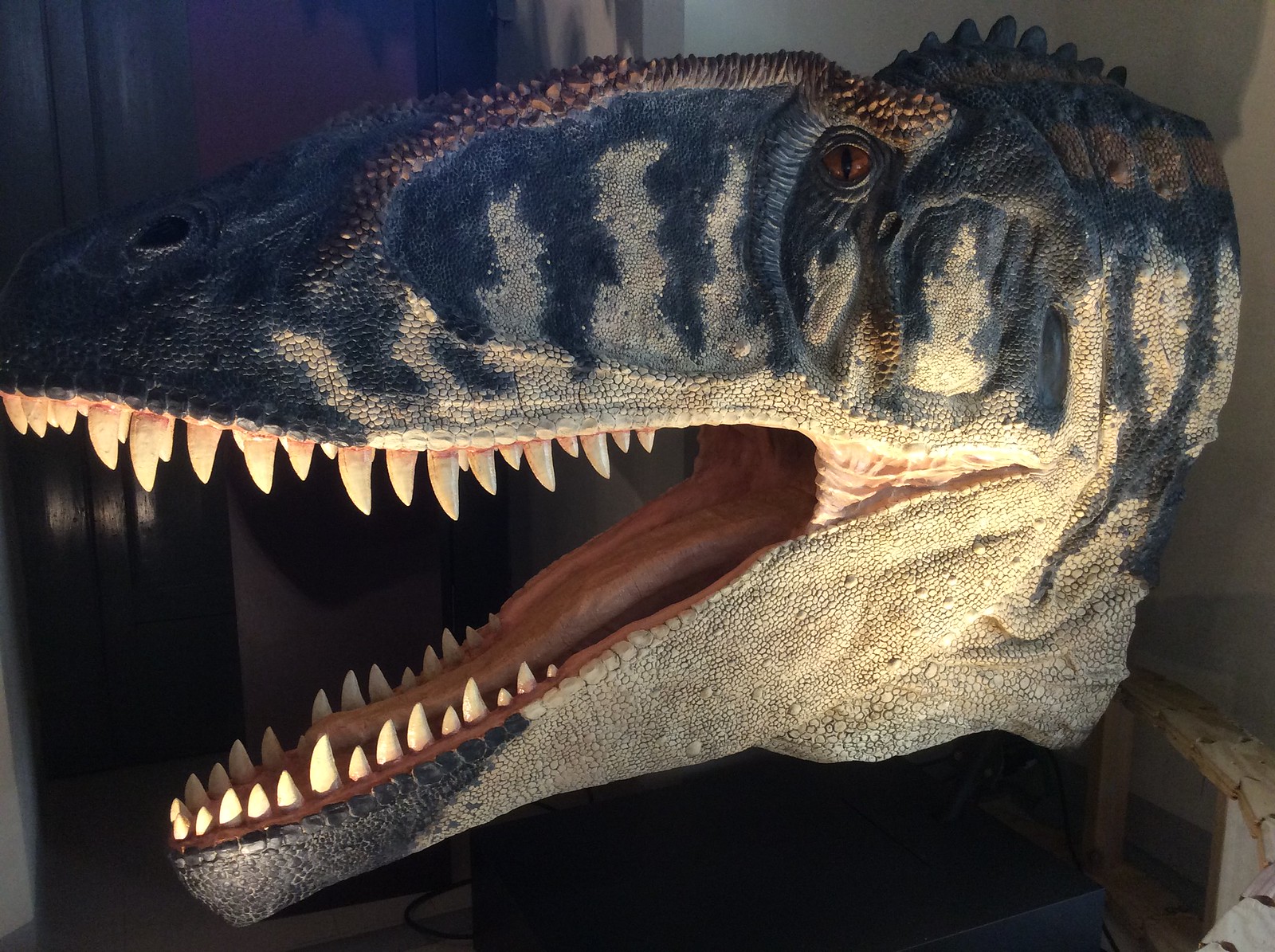Post by Carcharodon on Dec 30, 2013 2:56:35 GMT 5
Postosuchus kirkpatricki
Postosuchus is an extict genus of relatively large rauisuchid rauisuchians, a clade of large predatory crurotarsan archosaurs distantly related to crocodylians that lived an active terrestrial lifestyle. It is sometimes called a "running crocodile". Fossils have been found from what is now North America that date back to middle through to the late Triassic period (228-202 million years ago). Postosuchus was one of the largest carnivorous reptiles during the late Triassic, reaching up to 4 meters (13 ft) in length and 2 meters (6.5 ft) in height. In life the animal would weigh about 250 to 300 kilograms (550lb to 660lb). It had a massively built skull bearing dagger-like teeth. The neck was elongated, expanding to a short torso and long tail. Each one of Postosuchus's two forelimbs was slightly over half the size of the hindlimbs. This characteristic of short forelimbs can usually be seen in bipedal reptiles. Chatterjee suggested that Postosuchus could walk in an erect stance, since the short forelimbs were probably used only during slow locomotion. However, in 1995 Long and Murry stated that Postosuchus was heavily built and quadrupedal. There is debate over whether Postosuchus was bipedal or quadrupedal and scientists aren't certain, yet, about its gait. However, it has also been suggested by some palaeontologists that Postosuchus might possibly have been a facultative biped, meaning that it alternated between walking bipedally, occasionally, and quadrupedally.

Achillobator giganticus
Achillobator (pronounced /??k?l??be?t?r/; "Achilles' warrior/hero") is a genus of dromaeosaurid theropod dinosaur from the late Cretaceous Period of what is now Mongolia, about 90 million years ago. It was probably an active bipedal predator, hunting with the large sickle-shaped claw on the second toe of each hind foot. It was a large dromaeosaurid: the holotype and only known individual of Achillobator is estimated as 5 meters (16 ft) long. The fossil remains of Achillobator were first discovered during a Mongolian and Russian field expedition in 1989, though it was not described and named until ten years later, in 1999, by Mongolian paleontologist Altangerel Perle, and Americans Mark Norell and Jim Clark, although the description was not complete and was actually published without the knowledge of the latter two authors. Estimates suggest that Achillobator weighed 350 kilograms (771.6 pounds) at most.

Postosuchus is an extict genus of relatively large rauisuchid rauisuchians, a clade of large predatory crurotarsan archosaurs distantly related to crocodylians that lived an active terrestrial lifestyle. It is sometimes called a "running crocodile". Fossils have been found from what is now North America that date back to middle through to the late Triassic period (228-202 million years ago). Postosuchus was one of the largest carnivorous reptiles during the late Triassic, reaching up to 4 meters (13 ft) in length and 2 meters (6.5 ft) in height. In life the animal would weigh about 250 to 300 kilograms (550lb to 660lb). It had a massively built skull bearing dagger-like teeth. The neck was elongated, expanding to a short torso and long tail. Each one of Postosuchus's two forelimbs was slightly over half the size of the hindlimbs. This characteristic of short forelimbs can usually be seen in bipedal reptiles. Chatterjee suggested that Postosuchus could walk in an erect stance, since the short forelimbs were probably used only during slow locomotion. However, in 1995 Long and Murry stated that Postosuchus was heavily built and quadrupedal. There is debate over whether Postosuchus was bipedal or quadrupedal and scientists aren't certain, yet, about its gait. However, it has also been suggested by some palaeontologists that Postosuchus might possibly have been a facultative biped, meaning that it alternated between walking bipedally, occasionally, and quadrupedally.

Achillobator giganticus
Achillobator (pronounced /??k?l??be?t?r/; "Achilles' warrior/hero") is a genus of dromaeosaurid theropod dinosaur from the late Cretaceous Period of what is now Mongolia, about 90 million years ago. It was probably an active bipedal predator, hunting with the large sickle-shaped claw on the second toe of each hind foot. It was a large dromaeosaurid: the holotype and only known individual of Achillobator is estimated as 5 meters (16 ft) long. The fossil remains of Achillobator were first discovered during a Mongolian and Russian field expedition in 1989, though it was not described and named until ten years later, in 1999, by Mongolian paleontologist Altangerel Perle, and Americans Mark Norell and Jim Clark, although the description was not complete and was actually published without the knowledge of the latter two authors. Estimates suggest that Achillobator weighed 350 kilograms (771.6 pounds) at most.






